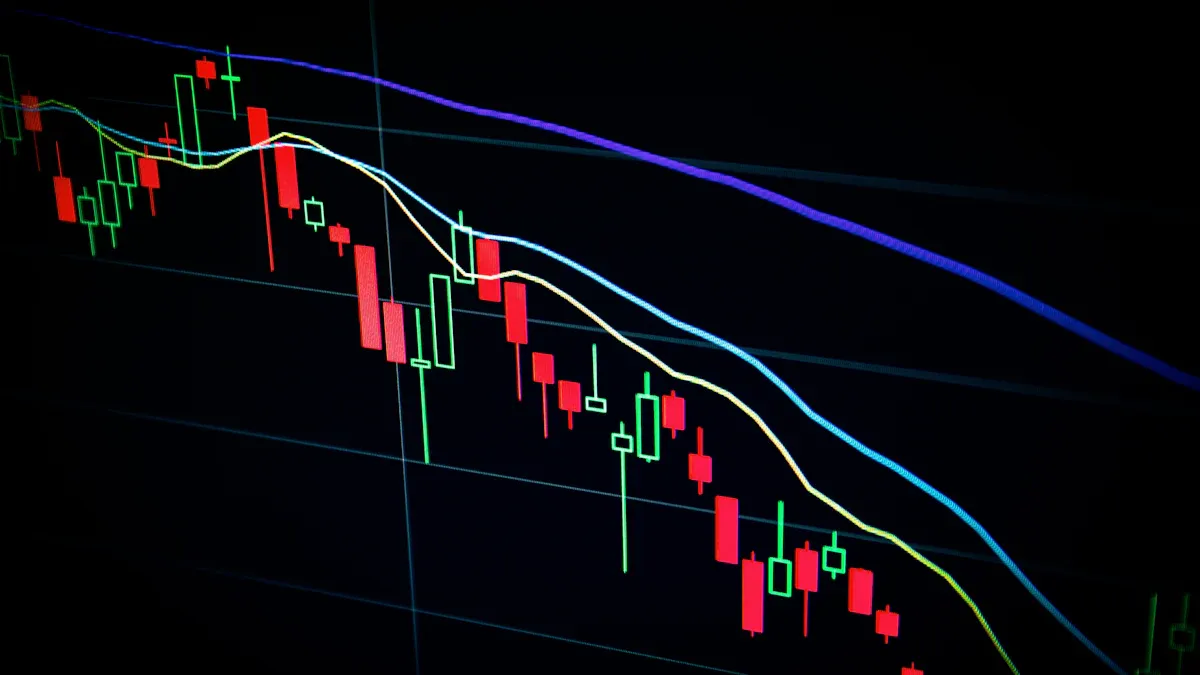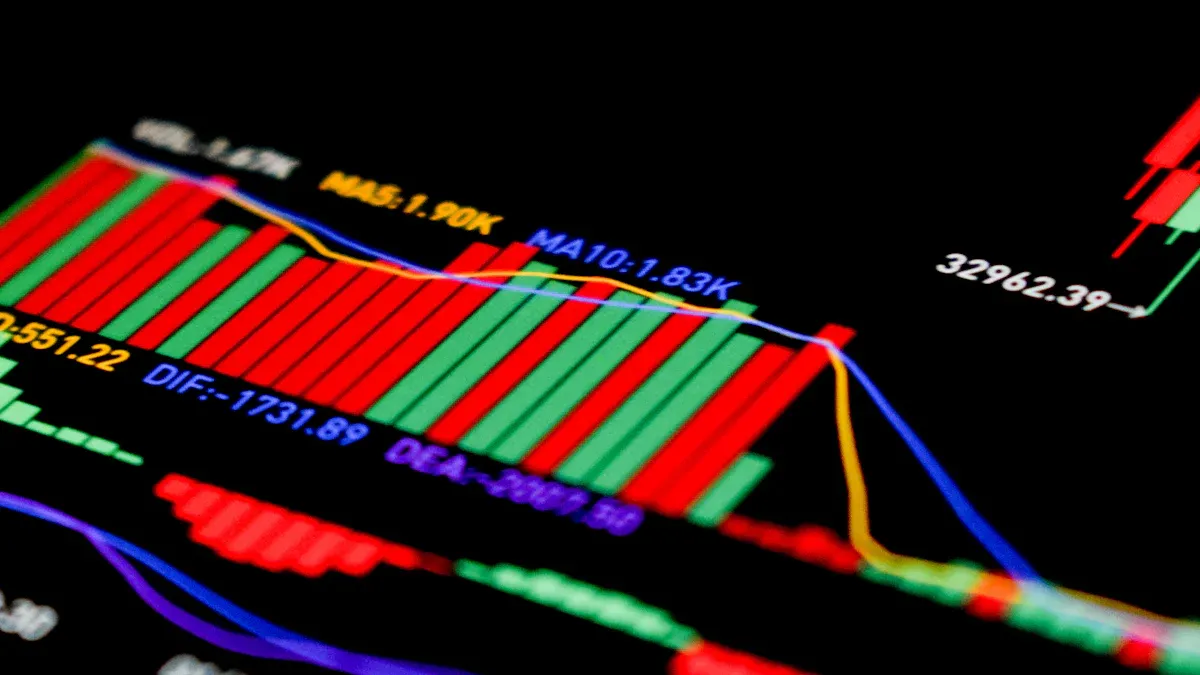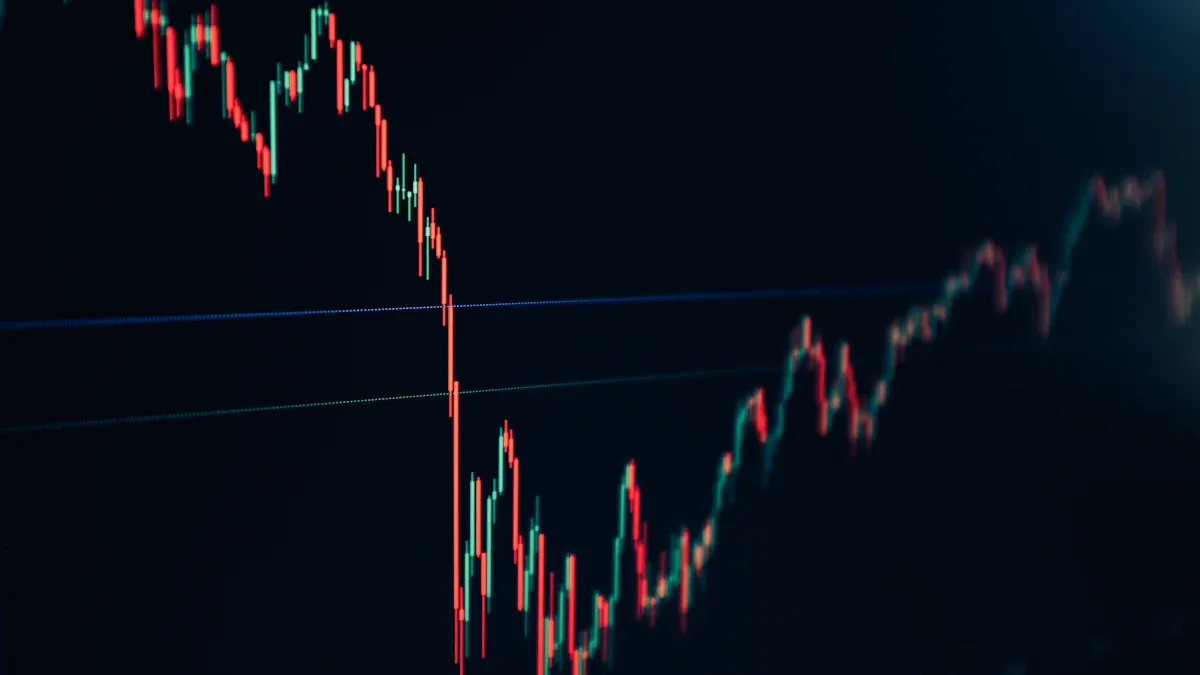- EasyCard
- Trade
- Help
- Announcement
- Academy
- SWIFT Code
- Iban Number
- Referral
- Customer Service
- Blog
- Creator
How to Protect Yourself When the Stock Market Crashes? Circuit Breaker Mechanism Protects Investments

Image Source: unsplash
During a stock market crash, protecting your assets becomes critical. You may feel panic as losses mount. Circuit breakers offer a safeguard by temporarily halting trading, allowing you to analyze calmly and avoid rash decisions. They provide time to make rational choices, reducing risk and enhancing safety.
Key Points
- Circuit breakers offer a cooling-off period during crashes, helping you avoid impulsive trades.
- Staying calm is crucial; use the pause to reassess strategies and avoid emotional decisions.
- Diversifying investments across asset types reduces risk and protects your portfolio.
- Monitoring market information keeps you informed for rational decision-making.
- Setting stop-loss orders controls losses, safeguarding your investments.
Definition of Circuit Breakers
Core Mechanism
During a market crash, volatility spikes, and panic can overwhelm investors. Circuit breakers are automated safeguards designed for such extremes. They halt trading when a market index drops sharply in a short period, giving you and other investors time to regroup and avoid panic-driven sales, mitigating market stampedes.
Circuit breakers were introduced after the 1987 Black Monday crash, when the Dow Jones fell 508 points (22%). Regulators found that pausing trading calms investors and stabilizes sentiment.
Operational Process
Here’s how circuit breakers work in the U.S. market:
- A 7% drop in the S&P 500 from the previous close triggers a 15-minute trading halt.
- A 13% drop triggers another 15-minute pause.
- A 20% drop halts trading for the remainder of the day, resuming the next day.
These pauses prevent free-fall scenarios, giving you a critical window to reassess and reduce irrational trades.
Circuit breakers aim to protect market liquidity and stability, enabling you to evaluate decisions during extreme volatility.
Role of Circuit Breakers in a Market Crash

Image Source: unsplash
Cooling-Off Period
A market crash can leave you anxious as prices plummet. Many investors sell in a frenzy. Circuit breakers provide a cooling-off period by pausing trading when thresholds are hit, allowing you to rethink your strategy.
In March 2020, U.S. markets triggered multiple circuit breakers. Each 15-minute pause gave investors time to review information, curbing emotional decisions. You can use this period to evaluate holdings and avoid rash moves.
Mitigating Panic
Crashes fuel widespread fear, prompting panic sales as prices drop. Circuit breakers ease this by halting trading, giving you time to process information and analyze the downturn’s cause.
U.S. market data shows pauses reduce irrational stampedes, lowering volatility. You can wait for stability instead of acting impulsively.
Preserving Liquidity
Market liquidity matters to you. During a crash, mass selling can trigger a liquidity crisis. Circuit breakers preserve liquidity by pausing trading, allowing buyers and sellers to adjust quotes, enabling more rational trading when markets reopen.
- Circuit breakers let you reassess risk during pauses.
- You avoid selling at rock-bottom prices in extreme conditions.
- Liquidity is preserved, stabilizing the trading environment.
A key U.S. market goal is preventing liquidity depletion. During a crash, circuit breakers help you minimize losses and enhance asset safety.
Historical Case Studies

Image Source: unsplash
2020 U.S. Market Circuit Breakers
In 2020, you witnessed historic U.S. market circuit breakers amid pandemic-driven panic. The market triggered halts four times in a month. Each 15-minute pause allowed you to reassess decisions, slowing volatility and preventing impulsive choices. These pauses helped stabilize sentiment as investors accessed new information.
China A-Share Circuit Breakers
In 2016, China’s A-share market implemented circuit breakers, triggering frequent pauses. Analysis of the CSI 300 Energy Index showed:
| Study Focus | Findings |
|---|---|
| CSI 300 Energy Index Stability | Post-implementation, volatility increased, indicating limited effectiveness. |
This case shows circuit breakers don’t always stabilize markets. Frequent halts amplified volatility in some sectors, highlighting design and outcome gaps you should consider.
Global Market Examples
Circuit breakers are used globally. In March 2020, South Korea’s market paused trading for 20 minutes, and India’s market triggered multiple halts. These examples show circuit breakers as a global tool to curb panic and protect investors by reducing irrational sales.
Investor Strategies During a Market Crash
Stay Calm
During a crash, staying calm is vital. Falling prices can spark anxiety, tempting you to sell as losses grow. Control emotions to avoid fear-driven decisions.
During a circuit breaker pause, take a moment to breathe and review your goals. U.S. market data shows calm investors avoid significant losses by resisting panic.
Diversify Investments
Diversification lowers risk. Avoid concentrating funds in one asset or sector. Spread investments across stocks, bonds, funds, or cash.
- Allocate funds to tech, healthcare, and consumer sectors.
- Include U.S. Treasuries or money market funds.
- Diversification cushions the impact of a single market or sector drop.
This approach minimizes losses, ensuring one stock’s decline doesn’t devastate your portfolio.
Monitor Information
Stay informed with market updates. News drives price swings, so access reliable sources like financial websites or U.S. exchange announcements.
During a pause, review professional reports to understand the crash’s cause. Track Federal Reserve policies or global economic shifts. Timely information aids rational decisions.
Use price alerts to monitor asset changes, helping you seize trading opportunities without delays.
Set Stop-Loss Orders
Set stop-loss orders to limit losses. These automatically sell assets when prices hit a threshold, preventing deeper losses.
- Set a 10% loss trigger for a stock to sell automatically.
- Adjust stop-loss levels based on market volatility.
Stop-loss orders cap your exposure, ensuring a crash doesn’t wipe out your capital. U.S. investors widely use this strategy for asset protection.
Limitations of Circuit Breakers
Risks Persist
Circuit breakers don’t eliminate risks. They pause trading, giving you time to think, but market fundamentals remain unchanged. You still face uncertainty post-pause.
Breakers don’t counter worsening economic data, poor earnings, or global events. They offer a window to reassess, not a risk-free solution.
Liquidity Constraints
While circuit breakers aim to preserve liquidity, they can complicate it. Research shows liquidity demand surges near breaker thresholds, but supply lags.
- Quote depth and order imbalances worsen before halts, raising trading difficulty.
- Investors trade preemptively near breaker levels, spiking volume and volatility.
These dynamics can exacerbate liquidity issues, making it harder for you to trade smoothly during extreme conditions.
Risk Preparedness
Don’t rely solely on circuit breakers. Prepare proactively:
Set stop-loss orders, diversify, and monitor information. Use the pause to adjust holdings and reduce single-asset risk. U.S. data shows proactive investors adapt better. Actively manage risk to enhance safety, rather than waiting for market recovery.
Circuit breakers offer a cooling-off period to curb impulsive trades during a crash. Diversify, set stop-losses, and stay informed to manage risks. Continuous learning and rational strategies, backed by U.S. market insights, enhance asset safety.
FAQ
Do circuit breakers affect your trading?
You can’t trade during a breaker pause. Trading resumes after the market stabilizes.
How do you know if a breaker is triggered?
Check real-time S&P 500 drops. Breakers activate at set percentage declines.
Do circuit breakers fully protect your assets?
They slow volatility but don’t eliminate risks. Diversify and set stop-losses for protection.
What can you do during a breaker pause?
Use the time to review data, analyze trends, and adjust strategies calmly.
How do circuit breakers impact liquidity?
| Impact Type | Description |
|---|---|
| Liquidity Protection | Avoids extreme price trades, stabilizes market |
| Liquidity Constraint | Trading pauses limit immediate action |
During a market crash, circuit breakers offer a critical cooling-off period to prevent impulsive decisions, but challenges like high cross-border remittance fees, exchange rate volatility, and platform data delays can limit your fund liquidity and trading efficiency, increasing costs.
BiyaPay provides a seamless financial platform to overcome these hurdles. Our real-time exchange rate queries give you instant access to fiat and digital currency conversion rates across various currencies, ensuring transparency and efficiency. With remittance fees as low as 0.5%, covering most countries globally and enabling same-day transfers, BiyaPay supports your investment decisions with swift fund access. Plus, you can trade US and Hong Kong stocks via our stocks feature without needing an overseas account, leveraging circuit breaker protections to optimize risk management. Sign up with BiyaPay today to enhance your fund efficiency, safeguard your assets, and navigate market volatility with confidence!
*This article is provided for general information purposes and does not constitute legal, tax or other professional advice from BiyaPay or its subsidiaries and its affiliates, and it is not intended as a substitute for obtaining advice from a financial advisor or any other professional.
We make no representations, warranties or warranties, express or implied, as to the accuracy, completeness or timeliness of the contents of this publication.




Contact Us
Company and Team
BiyaPay Products
Customer Services
is a broker-dealer registered with the U.S. Securities and Exchange Commission (SEC) (No.: 802-127417), member of the Financial Industry Regulatory Authority (FINRA) (CRD: 325027), member of the Securities Investor Protection Corporation (SIPC), and regulated by FINRA and SEC.
registered with the US Financial Crimes Enforcement Network (FinCEN), as a Money Services Business (MSB), registration number: 31000218637349, and regulated by FinCEN.
registered as Financial Service Provider (FSP number: FSP1007221) in New Zealand, and is a member of the Financial Dispute Resolution Scheme, a New Zealand independent dispute resolution service provider.




















